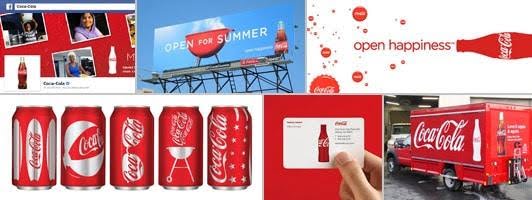In today’s competitive marketplace, having a strong and distinctive brand identity is essential for businesses looking to stand out and connect with their target audience. Your brand identity is more than just a logo or a catchy tagline; it’s the complete package of visual, emotional, and cultural elements that define your brand and distinguish it from the competition.

In this blog post, we’ll explore the crucial steps and strategies involved in creating a unique brand identity that resonates with your audience, drives engagement, and fosters loyalty. From understanding your target audience to ensuring consistency across all platforms, we’ll guide you through the process of building a brand that leaves a lasting impression.
Understanding Your Target Audience
Who Are They?
The foundation of any successful brand identity lies in a deep understanding of your target audience. Start by researching and analyzing their demographics, preferences, and behaviors. Are they young professionals, busy parents, or tech-savvy teenagers? Knowing who your audience is will help you tailor your brand to meet their specific needs and desires.
What Are Their Interests?
Delve into the interests and hobbies of your target audience. What do they enjoy doing in their free time? What kind of content do they consume? By aligning your brand with their interests, you can create a more relatable and engaging identity that captures their attention.
What Problems Do They Face?
Identifying the challenges and pain points your audience faces is key to positioning your brand as a solution provider. Whether it’s a lack of convenient meal options or the need for eco-friendly products, understanding these problems allows you to address them directly through your brand messaging and offerings.
How Can Your Brand Address Their Needs?
Once you have a clear picture of who your audience is and what they need, think about how your brand can fulfill those needs. Develop a value proposition that highlights the benefits and solutions your brand offers, ensuring it aligns with the desires and expectations of your audience.
Defining Your Brand Values and Personality
Establishing Brand Values
Your brand values represent the core principles and beliefs that guide your business decisions and actions. Consider what matters most to your brand. Do you prioritize innovation, sustainability, or exceptional customer service? Clearly defined values will help you create a brand identity that is authentic and meaningful.
Crafting a Brand Personality
Your brand personality humanizes your business, making it more relatable and approachable to your audience. Is your brand playful and fun, professional and authoritative, or warm and friendly? Choose a personality that reflects your values and resonates with your target audience, creating an emotional connection that fosters loyalty.
Designing Your Visual Brand Identity
Logo Design
A memorable logo is a cornerstone of your visual brand identity. It should be simple, versatile, and representative of your brand’s essence. Think about iconic logos like Apple’s apple or Nike’s swoosh—these designs are instantly recognizable and convey the brand’s identity in a powerful way.
Color Palette
Colors evoke emotions and can significantly influence how your brand is perceived. Choose a color palette that aligns with your brand values and personality. For example, McDonald’s uses red and yellow to evoke feelings of excitement and warmth, while also stimulating appetite.
Typography
Fonts play a crucial role in conveying your brand’s personality. Whether you opt for a sleek, modern typeface or a more traditional serif font, ensure it is readable and consistent across all platforms. Your typography should complement your overall visual identity and enhance brand recognition.
Imagery
The images you use in your branding should reflect your brand values and resonate with your audience. Whether it’s high-quality product photos, lifestyle imagery, or illustrative graphics, choose visuals that tell your brand’s story and create a cohesive look and feel.
Example:
A well-known example is McDonald’s. As a fast food restaurant, McDonald’s purposely chose red and yellow to lead their brand identity.

Not only are they warm colors that evoke “passion” and “warmth”, but the colors are also psychologically known to stimulate the appetite and increase blood circulation/heart rate. All of these characteristics were chosen to evoke the desired emotions on the fast food consumer.
Creating Consistency Across All Platforms
Visual Consistency
Ensure that your brand’s visual elements are consistent across all touch points, from your website and social media profiles to your marketing materials and packaging. This consistency helps build trust and familiarity with your audience.
Messaging Consistency
Your brand’s voice and tone should remain consistent in all communications. Whether you’re crafting a social media post, writing a blog, or responding to customer inquiries, your messaging should reflect your brand personality and values.
Customer Experience
Consistency also extends to the customer experience. Ensure that your customers receive the same level of service and quality every time they interact with your brand. A positive, consistent experience fosters trust and loyalty.
Brand Consistency Example: Coca-Cola

Evaluating and Evolving Your Brand Identity
Regular Assessment
Brand identity is not static; it should evolve with your business and market trends. Regularly evaluate your brand’s performance by measuring key metrics such as brand awareness, customer perception, and market share. Use surveys, focus groups, and social listening to gather feedback from your audience.
Adapting to Change
Based on the insights you gather, be prepared to adapt your brand identity to stay relevant. This might involve updating your visual identity, refining your messaging, or repositioning your brand to better meet the needs of your target audience.
Conclusion
Creating a unique brand identity is a multifaceted process that requires a deep understanding of your audience, a clear definition of your brand values and personality, a cohesive visual identity, and consistent implementation across all platforms.
By regularly evaluating and evolving your brand, you can ensure it remains relevant and continues to resonate with your audience. Start your branding journey with confidence, and let ELMNTL help you in crafting your brand’s identity.
As a trusted Full-Service Branding Agency, we are here to guide you through the next steps, ensuring you build a brand that stands out and makes a lasting impact.
So why wait? Contact us today and take the first step towards a remarkable brand identity.







